Shinzen Japanese Garden
Photo by adam blauert
Shinzen Friendship Garden in Woodward Park
Several times over the last few years, my wife and I have found ourselves in Fresno with time on our hands. Each of these times we have found interesting and enjoyable things to do – and most of them seem surprisingly little-known, even to people who live in Fresno.
Our most recent discovery was the Shinzen Friendship Garden in Woodward Park. Since we hadn’t heard much about it, we didn’t expect a whole lot. To our surprise, we found a stunning, meticulously manicured paradise with mature trees, plenty of shade, flowers, ponds, creeks, peacocks, and koi fish.
It’s the most beautiful and peaceful spot I’ve seen in any Central Valley city.
Photo by Adam Blauert
Bonsai Festival
The day of our visit also happened to be the annual Bonsai Festival. There were hundreds of bonsai trees – some of the more than half a century old – to enjoy. Several vendors had unique Japanese and garden-themed art and other items for sale.
Food was available at lunch time and live traditional Japanese music was being performed in the tea garden. The festival is held every April.
Information about the garden
For more information about the garden, the Bonsai Festival, and other annual events,
go to: https://www.shinzenjapanesegarden.org/ or call (559) 840-1264.
Guided tours can be scheduled and the garden can also be a great location to take family portraits. A special permit is required for this kind of use, but easy to obtain through the website.
The garden can be rented for weddings, meetings, and other social events.
Photo by Adam Blauert
Check the website to find out what current conditions are before you plan your visit. Although the spring bloom is probably the most popular season to visit, the garden is also an excellent fall destination with Japanese maples and other tree species putting on a vibrant leaf show.
Until the end of September, the garden is open on weekdays from 5PM until dusk and on weekends from 10AM until dusk. Starting October 1st and continuing through March 31st, the garden is only open on weekends from 10AM until 5PM.
Summer hours resume on April 1st. In addition to the $5/car fee to enter Woodward Park, a separate per person charge of $3 for ages 15-61 or $0.50 for ages 4-14 and seniors 62 and older is collected.
Children under 4 years old are free and the max charge for a family (up to 5 people) is $5.
Photo by Adam Blauert
Not far from Merced
If you live in Merced, the drive takes just over an hour. Located at 114 W. Audubon Drive in Fresno’s Woodward Park, take the Friant Road exit from Highway 41 and turn east on Friant Road.
Follow the signs for Woodward Park. It is located adjacent to the highway. The fee to enter the park is $5 per car. If a senior citizen is a driver or passenger in the vehicle it is reduced to $3 and it is free with a disabled parking permit.
The garden began in 1981 and was planted to honor Fresno’s sister city of Kochi, Japan. In the 33 years since that time, its plantings have matured into one of the most beautiful gardens within a day’s drive from home.
With the closing of Hanford’s Clark Center for Japanese Art and Culture in the summer of 2015, the Center’s remarkable collection of bonsai will be permanently transferred to Shinzen.
The grand opening of this collection is expected to take place sometime after July 2015 and it will make Shinzen even more exceptional.
If you make the trip you can also enjoy Woodward Park’s picnic areas, trails, and playgrounds. During the summer months, the park’s amphitheater that is frequently the site of concerts.
Designed to be both a public park and a bird sanctuary, large tree-ringed ponds are the centerpiece of the landscape. The park can be a great place to see wildlife.
Other locations to visit while in Fresno
While in Fresno, there are plenty of other things to enjoy. Some of the best include:
Photos below were taken in November of 2017
Clovis Botanical Garden
Photo by adam blauert
It’s popular and easy to make jokes about the Fresno area. In some ways, this generally-accepted negativity makes the area’s hidden gems even more surprising. The most recent one that I’ve discovered is the Clovis Botanical Garden.
Having some unexpected free time between two appointments and after discussing several options, we eventually decided to check out the garden.
Despite the fact that this is the dormant season for many plants, the garden was still quite interesting. We really enjoyed our visit and plan to return in the spring.
The best thing about the garden is that it is a great place to learn about water-wise plants that tolerate our hot summers and cool winters. It was designed to become “the premier regional garden for demonstrating wise water use in Valley landscapes.”
Although we’d been interested in learning about how to plant native plants and other low-water species, we hadn’t realized that it would be so easy and enjoyable to learn about until we ended up at the botanical garden almost by accident.
The Garden started with one acre and is in the process of developing three more. The plants are a mix of native species, plants from similar climates around the world, and hybrids – including trees, shrubs, ground cover, and various perennials – all of which are clearly labeled.
If you’re thinking of transitioning to landscaping that uses less water, this is a great place to see what your options are. We wrote down the names of several plants that we liked.
Several free pamphlets about recommended plants are available to visitors. My favorite has been “Sensational 70: Seventy Plants Friendly to Central Valley Landscapes.”
All the included plants are attractive, water-wise, non-invasive, and regularly available in retail nurseries.
Another pamphlet produced by the City of Fresno featured a link to a useful website of water-wise plants: http://www.fresno.watersavingplants.com/.
The garden also offers a demonstration planting of the drought-tolerant UC Verde Buffalograss developed by UC Davis and UC Riverside. This grass uses 75% less water than traditional lawns, only needs to be mowed once every 2-3 weeks, is designed for regular foot traffic, and produces few allergens.
The garden is operated by a nonprofit organization and all the work of maintenance and planting is done by volunteers.
It is open Wednesday through Sunday from 9AM to 4PM and admission is free.
It is closed Mondays, Tuesdays, and the following holidays: January 1, July 4, Thanksgiving, December 24, and December 25. Group tours for all ages – including school groups – can be arranged in advance.
The Garden is adjacent to the Dry Creek Park, which offers a large variety of attractive playground equipment for children and picnic tables. The Dry Creek bike/pedestrian path connects the park and garden to many other destinations in Clovis.
With this year’s worrisome drought conditions, I can’t imagine a timelier place to have discovered last weekend than the Clovis Botanical Garden.
For more information go to: http://clovisbotanicalgarden.com/ or call (559) 298-3091.
For upcoming events- Call or email Marge at (559) 323-5974 or cbgmarge@comcast.net.
Events can include workshops on water-wise gardening, an “Ask the Experts ‘Alley’” where guests can get gardening information and advice from a wide range of water and gardening experts, and a water-wise plant sale.
Local food trucks will provide a variety of lunch options.
For more information, email or call Georgia at (559) 287-2320 or gporcella@comcast.net.
Other locations to visit while in Fresno
While in Fresno, there are plenty of other things to enjoy. Some of the best include:
Moccasin Trout Hatchery
Photo by adam blauert
Fish and Game
In order to provide fishing opportunities for 38 million people, the California Department of Fish and Game grows trout and salmon in 21 hatcheries throughout the state and then stocks them in lakes and rivers to supplement the natural populations. Much of this is done by truck, however in roadless areas airplanes are used.
Moccasin hatchery
The closest trout hatchery to Merced County is located at Moccasin, along the northern route to Yosemite. For a map showing all of the DFG hatcheries in California, go to http://www.dfg.ca.gov/fish/Hatcheries/Moccasin/
Hours of operation
From 7:30AM to 3:30PM daily, visitors can observe and feed the rainbow trout at the Moccasin hatchery. The fish live and grow in long rectangular pools, protected from predators by a tall chain-link fence and overhead wires.
The largest fish – some of them very large – are located in a pool near the front of the hatchery. A sign indicates “show fish.”
Bring quarters to feed the fish
Fish food is sold from a dispenser in the parking area. Bring quarters - $5 provided nearly an hour of fun the last time I visited. If you bring several children, more quarters may be necessary.
Tossing the food into the water creates a feeding frenzy. It is thrilling to watch swarms of beautiful fish jumping out of the water and moving great distances in the blink of an eye.
It’s great fun for all ages, especially for kids. The fish are conditioned to expect food from large vertical objects and a feeding frenzy may start when your shadow crosses the water, even if you don’t throw any food in.
In the winter months the surrounding mountains block the sun by 2PM. If you want to enjoy its warmth, arrive by noon.
Planning your visit
During the summer heat an early visit is recommended. Trying to catch jumping fish with your camera can be a lot of fun if you are a photographer. A polarizing filter is helpful to cut through the glare on the water.
The hatchery is located near the junction of Highways 120 and 49. If you come from the south via Highway 49, watch for a sign indicating a right hand turn for the hatchery just before you reach the Highway 120 junction. If you come from the west on 120, turn right on 49 and look for a signed left hand turn.
About 70 minutes from Merced, the hatchery is close to the historic towns of Coulterville, Chinese Camp, Big Oak Flat, and Groveland. It is also relatively close to Sonora, Jamestown, Columbia State Historic Park, and Railtown 1897 State Historic Park.
The BLM’s Red Hills Area is a great spot for a picnic or a hike in the fall, winter, or spring.
Red Hills is known for having an excellent wildflower display in March and April. If you are headed to or from Yosemite on Highway 120, the hatchery makes a convenient stop.
Hetch Hetchy
The buildings surrounding the hatchery pools are where fish are bred and hatched. The larger buildings and the pond beyond the hatchery complex are part of the Hetch Hetchy power generation system.
Water is diverted from the Tuolumne River through the large pipes that descend the mountains to the east of the hatchery (penstocks).
The great force of the descending water is turned into electrical power. In addition to providing electrical power, the Hetch Hetchy system supplies San Francisco with drinking water.
The diversion begins at the Hetch Hetchy Reservoir inside Yosemite National Park.
Signs are posted warning hatchery visitors to stay off the concrete edges of the pools. Don’t feed the fish anything other than the food sold at the hatchery and don’t try to touch the fish.
To plan a school or group visit, contact the hatchery at http://www.dfg.ca.gov/fish/Hatcheries/Moccasin/
Merced County Historical Society Museum
photo by adam blauert
Merced County Historical Society Museum
Merced County’s history comes to life in the museum operated by the Merced County Historical Society. Housed in the 1875 Italianate-style courthouse, over 8,500 square feet of permanent and rotating exhibits tell of the history and development of the county.
One of the oldest and best-preserved buildings in the region, the old courthouse was designed by the state capitol architect Albert A. Bennett.
It is now on the National Register of Historic Places.
Exhibits
The museum’s displays cover the history of the county from ancient times to the present day including:
Yokut Indian artifacts
Displays of early ranching and farming, including a blacksmith shop
Artifacts from Merced’s Chinatown
A display of Merced County schools and a turn-of-the century classroom
“Old Betsy” – Merced’s first fire engine, built in 1859
The restored 1875 courtroom
Displays of home life in the later 1800’s through early 1900’s
Hours and Admission
The museum is open Wednesday through Sunday from 1-4. Admission is free and knowledgeable docents are available to provide tours. The building is wheelchair accessible.
Location
21st and N Streets, Merced
Gift Shop
The gift shop sells a wide variety of books about local history, along with gifts and souvenirs.
Events
The Merced County Historical Society hosts a wide range of history-themed events throughout the year. Check the website for a current schedule.
Archives
The museum holds a large collection of county records. Appointments to access the collection can be made by contacting the museum’s office.
Contact Information
(209) 723-2401/ http://www.mercedmuseum.org/
Yosemite – The Other Three Seasons
Photo by Adam Blauert
Yosemite National Park
The vast majority of Yosemite’s visitors arrive during the summer months. With comfortable weather, stunning waterfalls, kids out of school, and snow gone from roads, campgrounds, and trails, it’s not hard to guess why.
Summertime in Yosemite draws visitors from around the world – so many, in fact, that Yosemite Valley becomes one of the most international places in California.
It also becomes one of the most crowded. Despite the overwhelming popularity of the summer months, each season has surprises to offer.
Better yet, accommodations and parking are easier to obtain and the infamous traffic jams are virtually nonexistent during the fall, winter, and spring.
The park undergoes dramatic transitions between each season – fall leaves, winter snow, and the bright green of spring all offer beautiful surprises for visitors.
If you choose to visit in one of the “off” seasons, here are some of the special activities and sights that await you:
Fall: Autumn colors
Fall leaves: Quaking aspen groves in Lee Vining Canyon, just outside the park’s Tioga Pass Entrance turn bright yellow, gold, and orange from the middle to end of October. Oaks inYosemite Valley and Hetch Hetchy turn yellow orange towards the end of October.
Their leaves carpet the ground and often provide striking contrast to early snows. Dogwoods inYosemite Valley and the sequoia groves turn brilliant shades ranging from yellow to red about the same time.
Trails and backpacking
Most trails remain open until the first major snowfall. After that they may be accessed on snowshoes or cross-country skis. Tuolumne Meadows and Glacier Point: No services are available in these areas, but the roads remain open until closed by snow. Backpacking is still an option if you are prepared with gear for cold weather. The lower elevations of the park make some of the best destinations. Overnight parking is prohibited on the Tioga Road after October 14th to lessen the danger of backpackers getting caught in early snows.
Golf in Wawona
The 9-hole course remains open until closed by winter weather.
For more information go to: http://www.yosemitepark.com/activities_golfing.aspx
Tire chains and emergency supplies
Make sure you pack them for fall travel as weather can be unpredictable!
Winter
Snow recreation
Downhill skiing and snowboarding: Badger Pass Ski Area has offered downhill skiing since the 1930’s.
Today it is a family-friendly place with slopes ranging from easy to challenging, equipment rentals, and lessons for all ages and abilities. http://www.yosemitepark.com/badgerpass.aspx
Ice skating
The Curry Village Ice Rink in Yosemite Valley has been a popular place to ice skate since 1928.
All ages enjoy the ice and skate rentals are available in all sizes. Ice skating is surprisingly affordable and most people find it far less difficult that they might expect.
For more information go to: http://www.yosemitepark.com/Activities_WinterActivities_IceSkatingRink.aspx
Snow play
Yosemite Valley and Crane Flat are great places for kids to play in the snow. At an elevation of6,000 feet, Crane Flat has more consistent snowfall.
Snowshoeing and cross-country skiing
Both of these forms of over-snow transportation provide fun recreation, exercise, and opportunities to get away from crowds. Snowshoes can be rented at Badger Pass, the Crane Flat Store, and the Curry Village Ice Rink (Yosemite Valley). Cross-country skis can be rented at Badger Pass.
Lessons and overnight group trips are available at Badger Pass.
For more information on snowshoeing go to: http://www.yosemitepark.com/BadgerPass_Snowshoeing.aspx
and for cross-country skiing go to: http://www.yosemitepark.com/BadgerPass_CrossCountrySkiing.aspx
The park maintains overnight accommodations at Glacier Point and Ostrander Lake for those ready to attempt a challenging trip. Popular day trips include visiting the Mariposa, Tuolumne, and Merced giant sequoia groves.
For maps and route information
See the website : http://www.nps.gov/yose/planyourvisit/wintersports.htm
Holiday events
The annual spectacle of the Bracebridge Dinner at the Ahwahnee Hotel recreates a joyous 17th century English Christmas.
Tickets must be applied for well in advance.
They become available from the park concessionaire one year and one day in advance beginning at 7AM: http://www.yosemitepark.com/SpecialEventsPackages_SpecialEvents_BracebridgeDinners.aspx
The Bracebridge Dinner is a lively pageant of song and entertainment in the Ahwahnee’s dining room accompanied by a delicious 7-course meal.
The Ahwahnee and Wawona Hotels are both decked out Christmas every year.
Quiet time
Winter is a great time to stay in the park and enjoy solitude, snow, and crisp, starry nights.
Lodging and camping
Lodging and camping is available throughout the winter inYosemite Valley, and the Wawona Hotel is open through much of the winter.
Cabin rentals are available at Wawona, Foresta, and Yosemite West. Indoor lodging is preferable unless you have a lot of cold weather gear or an RV!
Hetch Hetchy
Open during daylight hours and is especially spectacular right after a snowstorm. Before making the trip, check with the park to make sure the road has been opened: (209) 372-0200.
Tire chains and emergency supplies
Tire chains are required in the park during the winter months and it is always a good idea to carry emergency survival supplies to cope with worst-case scenarios.
Spring
Green meadows, wildflowers in the lower elevations, and waterfalls as the weather warms, the snow melts and the waterfalls begin to become truly spectacular.
Trails
The snowmelt also begins to reopen trails to regular foot traffic and roads to car traffic. Yosemite Valley, Hetch Hetchy, and Wawona melt off first. The road to the Mariposa Grove of Big Trees often opens in late March or early April.
If it isn’t open, you can walk the two miles that remain closed. Waterproof boots or snowshoes may be appropriate, depending how much snow is on the ground. The Glacier Point road often opens in May.
Check with the park to determine which roads and trails are open: (209) 372-0200.
Backpacking
As trails reopen, backpacking trips become possible in the lower elevations.
Wildflowers
The wildflower show starts at the lowest elevations, especially along theMerced RiverCanyon in the El Portal area.
This area is often good in April. Through late April and early MayYosemite Valley and Hetch Hetchy start to green up. The wildflower show continues throughout the summer in the highest elevations.
The Wawona Golf Course
The golf course reopens after snow has left the meadow.
For more information go to: http://www.yosemitepark.com/activities_golfing.aspxTire chains and emergency supplies:Keep carrying them into the spring. Late snowstorms are always possible!
Every season and activity involves different kinds of risks. Before trying anything new, make sure you are aware of potential dangers and are prepared with the necessary skills and knowledge to avoid them.
Tips that will help you avoid crowds and related problems
- Avoid holiday weekends.
- Arrive early, find parking, and then use the free shuttle to get around the park.
- Try visiting less crowded (but not less spectacular) areas of the park that outside of Yosemite Valley.
- Wawona, Tuolumne Meadows, the Mariposa Grove of Big Trees, and Hetch Hetchy can all be excellent choices.
- Try to visit midweek during the summer.
- Get out and hike! Pick less popular trails. MirrorLake, the Mist Trail, LowerYosemiteFalls, and the trails on the floor of Yosemite Valley tend to be the most crowded.
A guidebook can help you find some of the ones that see fewer visitors.

My favorite is Jeffrey P. Schaffer’s Top Trails: Yosemite: Must-Do Hikes for Everyone this is because it covers just about every mile of trail in the park, but because it also points out a lot of alternatives including unofficial cross-country and “use” routes to infrequently visited spots.
Yosemite National Park Daily Traffic Forecast : http://www.nps.gov/yose/planyourvisit/traffic.htm
McHenry Mansion and Museum
Photo by Adam Blauert
Mansions in the valley built by the same brothers in law
On the corner of M Street and West North Bear Creek Drive in Merced stands the Hooper House Bear Creek Inn (http://www.hooperhouse.com/index.html). This large colonial style home was constructed in 1936 to replace the Huffman Mansion, which burned in 1933.
Hooper house
Merced’s Huffman Mansion was a near twin of Modesto’s McHenry Mansion. The homes were built by brothers-in-law Charles Huffman and Robert McHenry in 1883.
Both men prospered from the development of the Central Valley and its irrigation systems. Charles Huffman acquired land for the Southern Pacific Railroad’s route through the Central Valley and selected the townsite of Merced.
Huffman and McHenry’s 10,000 square foot mansions were the largest and most extravagant homes in the area.
McHenry Dining Room - photo by adam blauert
Gallo Foundation
Although Huffman’s house burned, McHenry’s house was saved from demolition by the Gallo Foundation and donated to the City of Modesto in the 1970’s.
It was completely restored and was opened to the public in 1983. It remained open until December of 2011 when it was nearly lost in a fire. A vigilant neighbor and Modesto’s firefighters saved it from total destruction.
Over the past year a second meticulous restoration has removed the signs of damage – much of which was caused by the house’s fire sprinklers. Furniture and art have been cleaned and restored. Wallpaper has been replaced with detailed reproductions of the original patterns.
The mansion is open for tours while the final repairs are being made. When I visited in December, one of the few things remaining was the replacement of the carpeting.
The floor coverings are currently being reproduced by the British factory that made the original ones purchased by Robert McHenry.
The McHenry Mansion is the best-preserved and largest Victorian mansion in Central California that is open to the public (outside of the Bay Area).
Free Admission
Admission is free and you can join a tour Sunday through Friday between 12:30 and 4PM. Tours last at least an hour and are led by docents who are experts about the time period recreated in the mansion (1883-1906).
McHenry Museum photo by adam blauert
On our recent tour I learned several new things about life and technology in the Victorian Era, despite having previously toured a number of other homes from the same time period. I was impressed by the success of the restoration.
The interior of the house is close to sparkling like it did on the day it was completed. When the carpet is installed (planned for spring 2013) the effect will be complete.
The mansion is located at the corner of 15th and I Streets in Modesto.
Tours start at the Visitor Center and Gift Store – two doors down from the mansion at 924 15th Street. A ten-minute video shown prior to tours does a great job of introducing the time period and telling the story of the McHenry family.
It is illustrated with an extensive collection of historic images. If you’re looking for unique gifts or special Christmas ornaments, the Gift Store has a nice selection.
McHenry Office - PHOTO BY ADAM BLAUERT
All proceeds go to the McHenry Mansion Foundation and its work to maintain this special house.
For more information
To learn more about the mansion, the McHenry family and the early years of Modesto, pick up a copy of Colleen Stanley Bare’s The McHenry Mansion: Modesto’s Heritage. Bare has also written an excellent book about the Huffman family of Merced and their mansion: Pioneer Genius: Charles Henry Huffman.
For more information go to www.mchenrymansion.org/mansion or call (209) 652-7190.
The mansion is decorated for Christmas every year and the garden may be rented for parties, receptions, and weddings.
A regularly-updated event calendar may be found at: http://www.mchenrymansion.org/events.html
Located nearby at 1402 I Street is the McHenry Museum. A vast collection of Stanislaus County historical exhibits and photographs are housed in a former library building that was built for the City of Modesto by the McHenry family in 1912.
The museum is open Tuesday through Sunday from 12 to 4PM. Due to the size of the museum’s collection and the length of the tours offered at the McHenry Museum, it is difficult to visit both the mansion and the museum on the same day. It is best to plan two separate trips.
For more information about the museum, go to www.mchenrymansion.org/museum
or call (209) 577-5235.
Other historic homes within an hour’s drive of Merced that offer tours include:
Romero Visitor Center – San Luis Reservoir
Photo by adam Blauert
Romero Visitor Center – San Luis ReservoirDrivers heading out of Merced County over Pacheco Pass often notice the sign for the Romero Visitor Center at the San Luis State Recreation Area and wonder what it is.
For several years I did this – always on my way to get somewhere else. Finally last month I stopped to check it out.
Sisk Dam
Located at the top of the long span of Sisk Dam, the visitor center has exhibits about the history of the area, the construction of the dam, and California’s massive water storage and delivery system. Tours are available and a variety of films about water in California can be shown upon request.
If you’ve ever wanted to know more about water use and management in the Golden State, this is a great place to start.
Hours and cost
Open from 9AM to 5 PM daily (except major holidays), it is an easy and relatively quick stop on your way to somewhere else.
Better yet, admission is free. While you are there you can learn about recreational opportunities at the San Luis State Recreation Area and other recreation areas within the California State Water Project System from the Department of Water Resources guide on duty.
California Department of Water Resources
Although most of the visitor services within the San Luis SRA are operated by California State Parks, the Romero Visitor Center is operated by the California Department of Water Resources.
The reservoir was constructed between 1963 and 1967. Part of both the State Water Project and the Central Valley Project, the reservoir holds water from the Sacramento-San Joaquin River Delta before it is delivered throughout the state via the California Aqueduct and the Delta-Mendota Canal.
This redistribution of the state’s water is part of what makes modern California and possible. In a state where much of the land is desert (less than 10 inches of precipitation annually) or semiarid (less than 20 inches annually), water management is tremendously important to support a population of 38 million inhabitants, plus agriculture, industry, commerce, recreation, tourism, and wildlife.
Largest off-stream reservoir in the United States
385-foot tall rock and earthfill Sisk Dam forms the fifth-largest reservoir in California. Holding 652 billion gallons of water when full, the lake is only surpassed in size by Shasta, Oroville, Trinity, and New Melones.
It is also the largest off-stream reservoir in the United States.
Rather than stopping the flow of a river along its natural course, an off-stream reservoir holds water that has been pumped away from its natural location.
With this year’s worrisome dry winter, it’s a great time to increase your knowledge of this precious and scarce resource.
Although the reservoir is currently near full capacity after last year’s exceptional winter, it may soon be returning to the low levels that were so common a couple of years ago. Now is the time to enjoy the beauty of the reservoir.
For optimal viewing, pick a day with clear skies and clean air.
If we continue to get precipitation the hills may be very green by March and April. Great wildflower shows are common after wet winters.
Tule Elk
From the patio behind the visitor center, visitors can use free telescopes to view the lake and the surrounding hills.
If you’re lucky, the area’s herd of native tule elk may be within sight. On my recent visit they were grazing close to the dam.
For more information
go to http://www.water.ca.gov/recreation/locations/sanluis/sanluisvisitor.cfm
or call (209) 827-5353.
Turlock Lake State Recreation Area
Turlock Lake State Recreation Area
Less than an hour from many points in Merced County, Turlock Lake large and easily accessible.
Location
Lake Road (accessed from Highway 132) between Waterford and La Grange Distance from Merced: 32 miles Distance from Los Banos: 67 miles Operating authority: California State Parks Surface area of lake: 3,500 acres
Facilities and activities
Boat ramp
Flush restrooms
Drinking fountains
Campgrounds with BBQ grills/fire rings, hot showers
Picnic areas with tables, shelters, and BBQ grills
Swimming beach
Short hiking trails
Dogs allowed? Yes
Horses allowed? No
Hunting allowed? No
Fish species: bass, bluegill, catfish, crappie, trout
Boat rentals: No
Sierra National Forest
PHOTO BY ADAM BLAUERT
National forests
Yosemite National Park is surrounded by national forest lands. To the northwest, the Stanislaus National Forest provides some of the closest mountain recreation for those of us in the Central Valley. On the opposite side of the Merced River, the Sierra National Forest provides equally close mountains.
When you drive to Yosemite on Highway 140 you are on the Sierra National Forest side of the river canyon for most of the journey. Directly across the water is Stanislaus National Forest.
McKinley Grove
The Park between Yosemite National Park and Kings Canyon National Park
The name “Sierra National Forest” can be confusing because the Sierra Nevada mountain range stretches all the way from Highway 36 east of Chico to Tehachapi Pass (Highway 58) in the south.
Sierra National Forest comprises only part of this area – specifically the area between Yosemite National Park and Kings Canyon National Park. Its 1.3 million acres of land provide just about every type of outdoor recreation imaginable. From dry foothills to snowbound windswept peaks it is a glorious place to explore.
Just as with its vast northern neighbor Stanislaus National Forest, the question “What do you do there?” requires a long answer. This article is an effort to answer that question and to provide a list of useful resources for learning about the forest and its recreational opportunities.
One of the best resources to start with is the annual visitor guide produced by Sierra National Forest
website: http://www.3forests.us/
Shaver Lake
Popular recreational activities within Sierra National Forest include
Auto touring
Staying in developed recreation areas within and near the forest
Hiking and backpacking in wilderness areas
Hiking trails outside of wilderness areas
Camping
Ranger-led activities
Fishing
Boating
Swimming
Hiking and camping with dogs
Horseback riding
Mountain biking
OHV riding and exploring 4-wheel drive roads
Hunting
Downhill skiing
Playing in the snow
Cross-country skiing and snowshoeing
Snowmobiling
Within the forest there are many privately owned areas. Some of these offer additional recreational opportunities plus tent and RV campgrounds, lodging, restaurants, stores, and gas stations.
Kaiser Pass Road View
Ranger Stations
The Sierra National Forest Headquarters is located at 1600 Tollhouse Road in Clovis. You can get general forest information and recreation permits by contacting the headquarters.
The phone number is (559) 297-0706 and the general website for the entire forest is www.fs.usda.gov/sierra/.
The forest is divided into districts which can provide more specific information about their respective areas
High Sierra District: 29688 Auberry Road, Prather –(559) 855-5355
Bass Lake District: 57003 Road 225, North Fork – (559) 877-2218
Yosemite Sierra Visitor Bureau: 41969 Highway 41, Oakhurst – (559) 683-4636
Mariposa Interagency Visitor Center: 5158 Highway 140, Mariposa –
(209) 966-7081
Eastwood (seasonal): Highway 168 and Kaiser Pass Road, Huntington Lake –
(559) 893-6611
Dinkey Creek (seasonal): Dinkey Creek Road at Dinkey Creek – (559) 841-3404
High Sierra (seasonal): Kaiser Pass Road – (559) 877-7173
Ansel Adams Wilderness
Road Access and Auto Touring
Unlike the national forests to the north, no road crosses the entire mountain range within Sierra National Forest. Highway 168, the major state highway in the area, penetrates deep into the mountains and the Kaiser Pass Road to Edison and Florence Lakes approaches the crest, but there is no automobile crossing. This leaves plenty of room for exploration on foot or horseback.
A number of secondary roads ranging from two-lane paved roads to rough four-wheel drive roads provide plenty of additional access. Besides Highway 168 and Kaiser Pass Road, the paved roads to Courtright and Wishon Reservoirs are great scenic drives.
The partially-paved 100-mile Sierra Vista Scenic Byway is also a great choice for auto touring. Usually the road can be traversed by any car if driven carefully, but high-clearance is recommended.
For more information about the byway go to www.sierravistascenicbyway.org/
Major Towns, Supplies, Lodging, Food, and Gas
The major supply and service locations are adjacent to the major roads. Each of the major routes has chambers of commerce and/or business associations with websites for information about lodging, food, supplies, gas, local activities, and special events.
I’ve listed them below in order from north to south:
Highway 140 ~ Mariposa, El Portal
Highway 41 ~ Oakhurst, Sugar Pine, Fish Camp
Sierra Vista Scenic Byway ~ Bass Lake, North Fork, South Fork
Highway 168 and Kaiser Pass ~ Shaver Lake, Huntington Lake, Edison Lake
Wilderness Areas
Five wilderness areas are within or partly within the boundaries of Sierra National Forest. They offer some of California’s best hiking, backpacking, and fishing. They are also great places to enjoy abundant and brilliant wildflowers and to see a variety of wildlife in its natural habitat.
Ansel Adams Wilderness
Named for the photographer whose timeless images turned the Sierra Nevada’s striking landscapes into universally-recognized icons, this great wilderness area makes up much of the northeastern section of Sierra National Forest. With stunning mountain peaks, alpine lakes, and the headwaters of the San Joaquin River, the Ansel Adams Wilderness has a lifetime of trails to explore.
Dinkey Lakes Wilderness
One of the smaller wilderness areas in the forest, this often-overlooked region has many lakes and surprisingly easy day hike and backpacking destinations.
Dinkey Lakes Wilderness
Note: the lakes are not “dinkey” in size; the wilderness was named for a dog named Dinkey who saved a pioneer from a grizzly bear attack.
John Muir Wilderness
The protection of the Sierra Nevada Mountains is largely due to the work of naturalist John Muir and it is only fitting that one of the largest wilderness areas in the range bears his name.
The eastern part of the wilderness is part of Inyo National Forest. This area contains some of the highest peaks in the lower 48 states, glaciers, an amazing number of lakes, and excellent fishing.
Kaiser Wilderness
This is a small wilderness area that is largely unknown outside the Fresno area. Centered around Kaiser Peak and north of Huntington Lake, the area contains several small lakes. Trails are generally more challenging than the equally-sized Dinkey Lakes Wilderness.
Monarch Wilderness
At the southernmost edge of Sierra National Forest, this small and almost unknown wilderness is mostly located within Sequoia National Forest and the Giant Sequoia National Monument. Although it lacks lakes and contains some extremely rugged terrain it is a place where solitude is likely to be found among old growth giant sequoias.
Trails Outside of Wilderness Areas
A number of excellent trails are found outside of the wilderness areas. Details can be found in some of the books listed below. Some of the most popular non-wilderness trails are within the forest’s two groves of giant sequoias:
Nelder Grove
On the northern edge of the forest north of Oakhurst, this partially-logged grove still has several impressive trees.
For more information go to: http://www.neldergrove.org/
McKinley Grove
Located along the McKinley Grove Road between Dinkey Creek and Wishon Reservoir. An easy walk through the trees is a trail that is within just about anyone’s ability range.
For more information go to: www.fs.usda.gov/Internet/FSE_DOCUMENTS/stelprdb5344073.pdf
Books, Maps, and Other Resources
Although web-based resources are great for planning a trip, cellular service, internet, and electric power are hard to come by in much of the forest.
If you can store electronic resources on your device and have well-charged batteries, you may be able to continue to access your information this way. It’s always good, however, to have some paper resources.
Print out information from the internet and bring both maps and books. The general guide produced by Sierra National Forest is invaluable to have with you, especially if your plans change while on a trip.
Weather and other elements outside of your control often require flexibility.
You can access and print that guide here: www.3forests.us/sierra
Books
Unfortunately there is no single book that comprehensively covers this area. For backpacking, Sierra South from Wilderness Press is a great choice.
For shorter day hikes, pick up a copy of California Hiking by Stienstra and Brown. Not only does this book highlight the best day hikes in Sierra National Forest, it is also an excellent resource for the entire state with a total of 1,000 hike routes.
Hiking the Sierra Nevada by Barry Parr is also a good choice.
Maps
It’s good to have a general highway map, but if you plan to explore off the main roads the Sierra National Forest Map is one of the most important things to have with you.
In addition to roads and trails, it also shows campgrounds, ranger stations, supply locations, and recreation areas. It supplements the general guide to the forest (see above).
You can buy it from the U.S. Geological Survey for $12: store.usgs.gov from a variety of other online retailers. You can also purchase it at a ranger station.
For hiking or backpacking, the following maps are the top choices: No matter what resources you use, always call a ranger station to verify current conditions before you leave on a trip. Conditions are always changing and even the official websites can be badly out of date.
Ansel Adams Wilderness published by Tom Harrison Maps
(I generally prefer Tom Harrison’s maps because they have the mileage directly written on each trail segment – this makes for easier trip planning. They are also waterproof).
Dinkey Lakes Wilderness published by Tom Harrison Maps
Mono Divide High Country Trail Map published by Tom Harrison (covers most of the John Muir Wilderness)
A Guide to the Kaiser Wilderness published by the US Forest Service
For more detailed hiking maps, check the USGS website for 7.5 and 15 minute sections.
You can order printed copies of these maps or download free electronic copies.
Edison Lake
Campground Camping
Within Sierra National Forest you’ll find 82 campgrounds.
Most are detailed in the forest guide: www.3forests.us/sierra
Some campgrounds are reservable in advance. You can search for reservable campsites by going to: www.recreation.gov.
Dispersed Camping
Camping outside a campground (usually referred to as “dispersed camping”) is permitted in areas of the forest where signs do not specifically prohibit it.
You can always check with a ranger station before you set up camp. In order to have a campfire you need a California Campfire Permit, available at any ranger station.
You can also take an online quiz and get one issued electronically by going to:
http://www.fs.usda.gov/sequoia/
As long as you follow the rules on the permit and make sure that you have chosen a safe site, your campfire is legal. Before your trip you should also make sure that additional campfire restrictions have not been put in place.
In dry years campfires are sometimes prohibited outside of established campgrounds. This year is no different and some limitations have been imposed.
Ranger-Led Activities
A variety of programs and hikes for all ages and ability levels are offered throughout the year. For current schedules call the ranger district that you plan to visit.
Fishing
The forest abounds with streams, rivers, natural lakes, and reservoirs. Many are stocked and most are open to fishing.
For regulations and stocking information, go to www.dfg.ca.gov. Tom Stienstra’s California Fishing is a good general guide to the whole state, including Sierra National Forest.
Boating
Motorized fishing boats area allowed on the following lakes: Bass, Courtright, Edison, Florence, Huntington, Mammoth Pool, Pine Flat, Redinger, Shaver, and Wishon. Water skiing and jet skis are allowed at Bass, Huntington, Pine Flat, Redinger, and Shaver.
Swimming
Swimming is allowed in most streams, rivers, and lakes, however it can be dangerous. Make sure that all people in your group have strong swimming abilities and you have flotation devices in case a rescue is necessary. Check with a ranger for current conditions and recommended areas.
Dogs
Dogs are welcome on trails and in campgrounds in national forests as long as they are on-leash and well-behaved. They are not permitted on trails in state or national parks. Dogs may be off-leash as long as they are under voice control within wilderness areas (except in bighorn sheep habitat areas – check with a ranger station if you are planning a backpacking trip with a dog).
Horses
Horses are permitted on trails within the national forest. For overnight trips they must be included on your wilderness permit. Check with the ranger station for the best trail parking for horse trailers. Day rides and overnight pack trips are offered by:
D&F Pack Station: http://dandfpackstation.squarespace.com/
High Sierra Pack Station: http://www.highsierrapackstations.com/index.html
Horse Corral Pack Station: http://www.highsierrapackers.org/horse.htm
Minarets Pack Station: http://www.highsierrapackers.org/min.htm
Muir Trail Ranch: http://www.muirtrailranch.com/horses.html
Shaver Lake Stables: http://www.shaverstable.com/
Yosemite Trails Pack Station: http://www.yosemitetrails.com/
If you are not up to carrying all your gear or if you want to enjoy the wilderness with in a less strenuous way, a pack trip is a good choice.
Mountain Bikes
All roads and most trails outside of wilderness areas are open to mountain bikes. Check with a ranger for recommended trails and roads.
Off-Highway Vehicles and 4-Wheel Drive Vehicles
Many remote forest roads require 4-wheel drive and several areas are open to off-highway vehicles.
A copy of the Sierra National Forest map is extremely helpful in locating the best sites.
Hunting
The forest, including wilderness areas, is open to hunting according to DFG regulations. You can check regulations at www.dfg.ca.gov. Target shooting is prohibited in wilderness areas.
Winter Activities
Some roads and campgrounds are open through the winter months, especially in the lower elevations. Always carry tire chains and know how to install them. Highways 41, 140, and 168 are open throughout the winter except for temporary snow closures.
Most other roads are closed. Many lodging facilities are open year-round.
Downhill skiing and snowboarding
Offered at China Peak on Highway 168 at Huntington Lake. For more information: www.skichinapeak.com/
Snow Play Areas
Sierra National Forest is also a popular destination to play in the snow. Five “Sno-Parks” offer snow recreation for a $5 use fee. Permits must be purchased before you reach the Sno-Park. Look for signs as you drive up Highway 168 or call the ranger station for a current listing.
Snowshoeing and cross-country skiing
Along trails is also popular. Occasionally ranger-led snow activities are offered. Check with the ranger station for details. If none are offered, try Yosemite or Sequoia National Parks.
To find your own route, pick up a copy of Best Snowshoe Trails of California by Mark White.
Snowmobile Trails
For snowmobiling information go to www.fs.usda.gov/detail/sierra/recreation/wintersports/?cid=stelprdb5303598
or call the ranger station.
Henderson Park
PHOTO BY ADAM BLAUERT
Henderson Park popular for picnics
Stretched along the bank of the Merced River in eastern Merced County, Henderson Park is shaded by tall trees and further back from the road than the facilities at Hagaman County Park or George J. Hatfield State Recreation Area.
Like McConnell State Recreation Area, it feels more distant and removed than it actually is.
The park is popular for picnicking, large gatherings, river recreation, and fishing. Three rental facilities are available, including an indoor clubhouse with kitchen and fireplace.
Although Merced County Parks and Recreation discourages swimming in county parks, swimming is not prohibited here. Warning signs are posted and any swimming you do is at your own risk.”
Location
Merced Falls Road, 1 mile east of Snelling Distance from Merced: 20 miles Distance from Los Banos: 55 miles
Facilities and activities
Flush restrooms
Drinking fountains
Picnic areas with tables, shelters, and BBQ grills
Group picnic/banquet facilities (indoor and outdoor)
Playground
Softball diamond
Horseshoe pits
Dogs allowed? No
Horses allowed? No
Hunting allowed? No
Fishing and boating
Fishing for rainbow trout is popular along the river and small boats can be hand launched from a concrete ramp (vehicles are not permitted near the ramp).
Nearby Parks: Camping is available at:
Livingston Historical Museum
photo by adam blauert
Livingston Historical Museum Foundation
On the northern edge of Merced County, the town of Livingston boasts an interesting historical museum.
It’s a great place to stop on a Sunday afternoon when it is staffed by members of the Livingston Historical Museum Foundation from 2 to 4 PM.
Located on the corner of Main and C Streets in downtown Livingston, the museum’s collections are housed in a brick building that once served as the town’s city hall and courthouse.
David Livingstone
The town was named for Dr. David Livingstone, a British explorer of Africa who was an international celebrity in the late 1800’s. An error on the town’s Post Office application resulted in the difference in spelling between his name and the town’s.
Although the town’s original streets were laid out when the railroad arrived in the 1870’s, real growth began when irrigation water became available in the early 1900’s.
Like its neighbors Turlock, Hilmar, and Atwater, much of the settlement was accomplished through the colony system. Land speculators bought large tracts of land and then subdivided them and sold the subdivisions to farmers on credit.
These colony subdivisions were often marketed to specific ethnic groups through cultural networks and home-language periodicals. Best-known of these colonies was Yamato, settled by Japanese-Americans.
The museum has an excellent collection of photographs and artifacts from these early settlers. Their first years in the area were challenging, but hard work and determination ultimately led to success.
Internment camps
During WWII, prejudice and war hysteria led to the incarceration of 110,000 Japanese-Americans in internment camps throughout the western states. The museum has many examples of art created by the internees in the camps after they were forced to leave their homes.
One of the inspiring stories to come out of this sad time in our history is that of how the land and property of Livingston’s Japanese-American farmers was protected by a corporation formed by these farmers and placed under the control of a European-American lawyer.
Unlike most other Japanese-Americans, these farmers got most of their property back after they were released.
Wakami, Japan
You can learn more about this story at the museum. Fittingly, Livingston’s sister city is Wakami, Japan. The museum displays a collection of gifts from Wakami.
For more information about Japanese-American internment, you can also visit the Merced Assembly Center Memorial at the Merced County Fairgrounds.
4,669 Japanese-Americans from areas surrounding Merced and Livingston were held at the Merced Fairgrounds for five months before spending the remainder of the war at Amache, Colorado.
The story of the internment is told by plaques bearing the names of the internees, historical displays, and a sculpture.
This simple, highly effective sculpture depicts a young internee seated on a pile of suitcases awaiting an unknown and frightening future.
Livingston has drawn people from around the globe. In addition to Japan, many of its residents and their ancestors have come from the Azores Islands, the Philippines, Mexico, and most recently, India.
The museum displays cultural artifacts from all of these groups.
The famous stoplight
In front of the museum you can see the famous Livingston stoplight– the last remaining stoplight on the 275-mile stretch of Highway 99 south of Sacramento and the site of many accidents until community leaders finally convinced the state to rebuild the road as a modern freeway in 1997.
Photograph collection
As a teacher, I was especially interested in the collection of photographs of the original Livingston High School. Built in 1924, it was one of the first high schools in the county.
The photos depict how much education has changed since that time. Although Livingston is still a small town, it has seen a lot of change in the last 100 years. The Livingston Historical Museum does an excellent job of showing just how much change has occurred.
Fresno Chaffee Zoo
photo by adam blauert
Zoos in the Valley
The Applegate Zoo in Merced is the best place within a 100 mile drive where you are guaranteed to see a broad selection of local wildlife.
Fresno’s Chaffee Zoo is the best place with 100 miles to see a wide range of animals from around the world.
Fresno Zoo
An easy hour drive south from Merced, the zoo has so much to see that you’ll need half a day or more to enjoy all the exhibits. On our recent visit we spent 2 ½ hours and could have easily stayed longer if closing time hadn’t rolled around so quickly. Some highlight exhibits of the zoo include:
Large mammals: wolves, tigers, giraffes, gazelles, orangutans, zebras, Asian elephants, tapirs, camels, bears, warthogs, sea lions
Marsupials: kangaroo
Reptiles: Galapagos tortoises, alligators, a variety of snakes, and dozens of smaller species
Avian species: Andean condors, eagles, flamingos, emus, ostriches, black swans, and special aviaries devoted to African, Australian, and tropical species
Interactive Zoo
In addition to exhibits you can walk around and enjoy, the zoo is also interactive and includes:
Small Wonders Animal Encounters: a petting zoo where kids of all ages can enjoy gentle animals face-to-face.
Giraffe Feeding: For $2 a person, you can hand feed a giraffe. For $3 more you can get a professional quality photo of the feeding to take home.
Sea Lion Cove: The best recent addition to the zoo is this opportunity to view sea lions at four different levels. My favorite level is the underwater one. Looking into the sea lion pool through a large window, you can be at eye level with the sea lions as they swim towards the glass and interact with their visitors. I’m still not sure if it is more fun to watch the sea lions or to watch small children as they interact with the sea lions!
Dino Dig: Kids of all ages can participate in a simulated paleontological dig to recover a full-size tyrannosaurs rex.
Stingray Bay: For $2/person, you can touch cow-nose rays and southern stingrays.
Winged Wonders Bird Show: daily free-flight bird show presented during good weather from March through October.
Keeper Chats: Offered several times daily in many sections of the zoo, these presentations are a great way to learn more about the zoo’s animals from the people who take care of them.
Walk-Through Bird Enclosures: The Tropical Rain Forest, African Aviary, and Australian Aviary are places where you can walk among the birds and see them at extremely close range.
For current schedules for all of these activities, check the zoo’s website.
https://www.fresnochaffeezoo.org/
The zoo is open every day of the year except for December 25th. From April 1 through September 30, it is open from 9AM to 6PM. From October 1 through March 31 it is open from 9AM to 4PM.
On Thanksgiving Day it is open from 9AM to 2PM. Admission is $7 for all visitors aged 12 through 61 and $3.50 for seniors (62+) and children (2-11). Children under 2 are free.
The zoo has clean restrooms, a gift shop, and two food options if you get hungry during your visit (Safari Café and Nosara Grille).
No age limit to fun
No matter what your age, the zoo is a lot of fun. Strollers, wheelchairs, and other mobility devices are welcome. Wagons, strollers, and wheelchairs can also be rented once you arrive at the zoo.
If you’re a photographer, the zoo is a great place to bring your camera. If you hope to take photos for a purpose other than personal use, check with the Zoo’s Marketing Department first.
Sea Lion Cove was the zoo’s latest addition and ongoing work will bring a variety of new exhibits in the months to come. The next two projects will bring African Spotted-necked river otters and king cobras.
Located at 894 West Belmont Avenue in Fresno, it’s easy to find. From Highway 99, exit Belmont and turn left onto Belmont. Look for Roeding Park on your left and turn into the main entrance.
There is a $5 fee to enter the park, which includes your parking. The park can be crowded on weekends, so it’s a wise idea to arrive in the morning or to visit on a weekday.
For more information, go to https://www.fresnochaffeezoo.org/
or call (559) 498-5910.
Party Information
In addition to regular visitor hours, the zoo offers a Zoo Camp, family and group overnight events, twilight and backstage tours.
The zoo can also accommodate birthday parties and weddings. You can find more information and current schedules on the website.
George J. Hatfield Recreation Area
Photo by adam blauert
George J. Hatfield Recreation Area:
This state park has a mile of river frontage and plenty of shade. It’s proximity to the road and the poor condition of some of its facilities make it less favorable than some of the other parks on the river, but it still provides many excellent fishing opportunities.
Near the park is a historic bridge over the Merced River. Built in 1910, it is now open only to pedestrians and bikers. It provides nice views of the river.
Location: 4394 North Kelly Road, Hilmar, CA
Distance from Merced: 30 miles
Distance from Los Banos: 29 miles
Size: 46.5 acres
Hatfield Facilities and activities:
Flush restrooms
Drinking fountains
Campgrounds/group campgrounds with BBQ grills/fire rings
Picnic areas with tables, shelters, and BBQ grills
Group picnic areas
Swimming area
Dogs allowed? Yes
Horses allowed? No
Hunting allowed? No
Fishing or boating? Fishing can be good at George J. Hatfield Recreation Area. Rainbow trout and bass can be caught in the spring; catfish and perch throughout the year. No boating ramp is provided, but it is possible to swim in the river or to launch a float tube or hand-carried boat.
Website: Hatfield Recreation (click Here)
Nearby Parks: Undeveloped Great Valley Grasslands State Park has a six mile hiking trail.
Raymond Museum
photo by adam blauert
From 1886 until the completion of the Yosemite Valley Railroad in 1907, the closest you could get to Yosemite by rail was the town of Raymond in the foothills of Madera County. Far more comfortable than stagecoach, many visitors chose to take the train to Raymond in order to shorten their stagecoach ride. When President Teddy Roosevelt visited the park in 1905 to meet and camp with conservationist John Muir, this is the way he traveled.
Although the tracks are gone and most people have never heard of Raymond, the town still survives in the hills between Eastman and Hensley Lakes. Since 2008, it has boasted a great museum.
The Charles Miller House
The museum is located in the town’s first building – the Charles Miller House – built in 1886. What’s interesting about it is that it contains both the history of the town and a lot of information and photos of early travel to Yosemite.
The house is furnished to look the way it would have looked in the 1880’s – furnishings interspersed with extensive displays of historic photos and artifacts.
The nearby quarry at Knowles has provided “Sierra White” granite for many of the state’s greatest public buildings including the Los Angeles City Hall, the Campanile at UC Berkeley, and many of the civic buildings constructed in San Francisco after the 1906 earthquake.
The museum has a room devoted to Knowles and its quarry. Outside is a huge granite saw – the oldest in California.
If you have kids, they will enjoy the fully-restored Southern Pacific caboose in front of the museum. The interior is exactly the way it would have been when it was operational. It was recently brought back to this condition by dedicated local volunteers.
In addition to the Charles Miller House and the caboose, there’s a fully-restored carriage house with a wagon, a buggy, harnesses, tack, ranch equipment, and historic photos.
How to find
To find Raymond, head south from Merced on Highway 99 and exit at Robertson Boulevard in Chowchilla. Drive east over the freeway and follow signs to Raymond: East on Road 26, South (right) on Road 29, East (left) on Road 603, Left (north) on Road 600.
When you arrive in Raymond, the museum will be on your right. Look for the red caboose and you won’t miss it.
The address is 31956 Road 600 (also known as Raymond Road) – slightly less than an hour’s drive from Merced. It is open Sundays from noon to 4PM and by appointment.
Schools welcome
School and homeschool groups are welcome and there are tables where you can enjoy a picnic or sandwiches from the town’s general store. The Frontier Inn also offers food.
A good museum or historic site only has the opportunity to become a great one when there’s someone who knows all about it and has a passion to explain it to everyone who comes to visit.
Raymond area cattle ranchers Lynn and Wayne Northrop have poured thousands of hours into making this museum a fun place to learn about history and I really enjoyed meeting Lynn on my recent visit. She knows just about everything there is to know about Raymond, its history, and its many connections with Yosemite and her enthusiasm about it is contagious.
Although hot in summer, Raymond is an enjoyable place to visit in the fall, winter, or spring – especially during wildflower season (late March through May).
For more information about special events
go to: http://www.yosemitethisyear.com/events/index.php?eID=2236.
Raymond’s general store/bar has the unofficial status of a living museum. It hasn’t changed much since it opened in 1914. The left side of the building is occupied by the bar, while the right side is occupied by the store. The store offers sandwiches, and the Frontier Inn Tavern on Front Street (visible from the main road) also offers food.
Another place you can enjoy a good meal and historic photos at the same time is the Hills Pride Inn in nearby Knowles.
To visit Knowles, continue through Raymond on Road 600 and turn right on Road 415. Turn right again on Knolwes Road (Road 606).
After you pass the Hills Pride Inn on the right, look for the quarry on the left and the granite St. Anne’s Chapel on the right. This beautiful structure was originally built as the Knowles School in 1920, abandoned in 1942, and restored as a church in 1961-1962.
If you find Raymond’s transportation history interesting, you can find one of the stagecoaches that ran the Raymond to Yosemite route in the Madera County Museum.
For more information about the Raymond Museum, go to:
http://www.southyosemitemuseums.org/rm/
You can also contact the museum’s curator, Lynn Northrop, at wandernranch@sti.net
or by calling (559) 689-1886.
Merced County Wildlife Refuges
photo by adam blauert
Merced County Wildlife Refuges
Most of the acreage is managed by the U.S. Fish and Wildlife Service, with additional areas under the jurisdiction of the California Department of Fish and Game.
Recommended areas to visit
Merced National Wildlife Refuge
Merced Unit: Auto tour, hiking trails, viewing platforms
San Luis National Wildlife Refuge
San Luis Unit: Elk and waterfowl auto tours, hiking trails, viewing platforms, visitor center.
San Luis National Wildlife Refuge Complex
The largest unit is the San Luis National Wildlife Refuge Complex, which is made up of several individual units including the Merced National Wildlife Refuge and the San Luis National Wildlife Refuge.
Much of this area is open to the public for a variety of recreational uses.
Tule Elk
In addition to the many avian species, a herd of magnificent tule elk can be viewed in the San Luis Unit on Wolfsen Road north of Los Banos. Once hunted nearly to extinction, stable populations now live in several areas throughout the state.
Birds
The refuge complex is located along the Pacific Flyway, an important migration corridor for dozens of species of waterfowl and other birds.
Some of the most common include Ross’ geese, Aleutian cackling geese, snow geese, green-winged teal, mallard, northern pintail, gadwall, American wigeon, northern shoveler, and white-fronted geese.
The refuge complex constitutes the largest contiguous freshwater wetlands remaining in California.
While wildlife can be viewed throughout the entire year, the wintering populations of lesser Sandhill cranes and Ross’ geese are a highlight. They arrive in the fall and stay until about mid-April, eventually returning to their summer homes in Alaska and Canada.
Some remain throughout the summer and use the area as a breeding ground. During the foggy winter months, afternoon is usually the best time to visit.
In addition to wetlands, vernal pool and upland habitat also abound in the refuge. As the ground dries out in the spring, a brilliant wildflower show occurs in the vernal pool regions.
Visitor Center
Interpretive displays and group programs will be offered. Special tours and programs can be arranged for schools, clubs, and other organizations. For information about the new visitor center click here.
Useful websites for the San Luis Wildlife Refuge Complex
San Luis NWR main website: http://www.fws.gov/sanluis/default.htm
Each refuge area with public access is described below with its principal recreational features and facilities. Check each individual area for specific rules regarding hunting and fishing.
Catfish and bass are the most common fish species. Hunting regulations and types of game vary by area, but can include all waterfowl and upland game birds, deer, and wild pigs. Horses are not permitted.
For additional information, use the web links to access resources provided by the U.S. Fish and Wildlife Service and the California Department of Fish and Game.
Merced National Wildlife Refuge - Merced Unit
The main unit of the Merced NWR is open to both auto touring and hiking on three designated trails. Only a few miles from Merced, this is a great place to spend an afternoon in the fall, winter, or spring.
Location: Sandy Mush Road, west of Highway 59.
Activities and Facilities:
Wildlife viewing
Auto tour route – 5.2 mile auto tour route circles the heart of the refuge with four viewpoints, two observation decks and access to three hiking trails. Visitors are asked to remain in their vehicles except at these points.
Hiking trails
Meadowlark Trail – 1.5 mile loop
Kestrel Trail - .5 mile loop
Bittern Marsh Trail - .6 mile loop
Hunting
Restrooms
A photo blind is available for nature photographers by obtaining a special use permit. Vernal pools can be observed north of Sandy Mush Road. Pets are allowed as long as they remain in vehicles. No fishing is allowed in this refuge area.
Merced National Wildlife Refuge – Lone Tree Unit
This area is only open to hunting.
Location: Sandy Mush Road, west of Highway 59. Adjacent to Merced Unit.
Activities and Facilities
Hunting
San Luis National Wildlife Refuge – Blue Goose Unit
This area is only open to hunting.
Location: Highway 140, east of Gustine. Adjacent to Kesterton Unit.
Activities and Facilities:
Hunting
San Luis National Wildlife Refuge – Freitas Unit
This area is only open to hunting.
Location: Highway 140, east of Gustine. Adjacent to Kesterton Unit.
Activities and Facilities:
Hunting
San Luis National Wildlife Refuge - Kesterson Unit
In the late 1980’s, the selenium-contaminated Kesterton Reservoir was drained, decontaminated, and redeveloped as an addition to the San Luis NWR. It now provides over ten miles of unsigned hiking trails and great opportunities to view wildlife.
Trails are not marked, but visitors are welcome to wander around outside of hunting season.
Location: Highway 140, east of Gustine
Activities and Facilities:
Wildlife viewing
Hiking trails: Kesterton contains a network of over 10 miles of interconnected nature trails. These trails are open from February 15 – September 15.
Hunting
San Luis National Wildlife Refuge - San Luis Unit
This part of the SLNWR offers the widest range of activities. Two auto tour routes and three hiking trails give visitors a chance to observe tule elk and many bird species. The new visitor center is now open. The new visitor center provides an opportunity to learn more about the refuge and its inhabitants.
Location: Wolfsen Road, north of Los Banos.
Activities and Facilities:
Wildlife viewing
Auto tour route
Elk Tour Route – 5 miles
Wetlands and Waterfowl Tour Route – 12 miles
Visitor center
Dogs allowed
Hiking trails
Sousa Trail – 1.2 miles to an observation platform and telescope
Chester Trail – 1 mile (Open February 15 – September 15) This trail leads to the San Joaquin River and the site of Chester, an early settlement in Merced County.
Winton Marsh Trail - .7 mile to an observation platform and benches
Hunting
Fishing – a special access road on the west side of the elk enclosure provides access to all fishing areas.
Restrooms
Drinking fountains
San Luis National Wildlife Refuge - West Bear Creek Unit
This area offers hiking trails and an auto tour route. It receives less visitation than other parts of the San Luis NWR.
Location: Highway 165 (Lander Avenue), north of Los Banos
Activities and Facilities
Wildlife viewing
Auto tour route: 2 ¼ mile route around a large wetlands slightly west of the San Joaquin River with two viewpoints.
Hiking trails:
Woody Pond Trail – approximately 1.5 mile loop trail with viewpoint
Raccoon Marsh Trail – approximately 1 mile loop trail with viewpoint
Hunting
Restrooms
Wildlife Refuges Operated by the California Department of Fish and Game
In addition to the 128000 acres managed by the US Fish & Wildlife Service, another 24,000 acres are managed by the California Department of Fish and Game. These include:
Cottonwood Creek Wildlife Area
Los Banos Wildlife Area
North Grasslands Wildlife Area
O’Neill Forebay Wildlife Area
San Luis Reservoir Wildlife Area
Volta Wildlife Area
West Hilmar Wildlife Area
State Wildlife Refuges Map: http://www.dfg.ca.gov/lands/wa/region4/docs/LosBanosGrasslandsVoltaWA.pdf
"Each refuge area with public access is described below with its principal recreational features and facilities. Check each individual area for specific rules regarding hunting and fishing.
Catfish and bass are the most common fish species. Hunting regulations and types of game vary by area, but can include all waterfowl and upland game birds, deer, and wild pigs.
Horses are not permitted. Hiking biking are allowed from the end of the second week in February through September. Bicycles may be ridden on levee roads.
Dogs are permitted and may be off leash from June 6 through the end of March. Drawdown of the waters within the refuges usually takes place in spring and the refuges remain largely dry until the late fall.
For additional information, use the web links to access resources provided by the U.S. Fish and Wildlife Service and the California Department of Fish and Game.”
Cottonwood Creek Wildlife Area
Location: Western edge of Merced County, northeast of Highway 152
Activities:
Wildlife viewing
Hunting
Website: http://www.dfg.ca.gov/lands/wa/region4/cottonwoodcreek.html
Los Banos Wildlife Area
Location: Northeast of Los Banos on Henry Miller Avenue
Fishing and kayaking are allowed on Buttonwillow and Ruth Lakes. Catfish and crappie are the most commonly caught fish species.
Activities and Facilities:
Wildlife viewing
Hunting
Fishing
Boat launch
Restrooms
Drinking fountains
No designated trails, but foot and bike access is allowed throughout the area.
Website: http://www.dfg.ca.gov/lands/wa/region4/losbanos.html
North Grasslands Wildlife Area
China Island Unit: Brazo Road, northeast of Highway 33, between Gustine and Newman
Gadwall Unit: Santa Fe Grade Road, east of Los Banos
Salt Slough Unit: North of Los Banos on Highway 165 (Lander Avenue)
Activities and Facilities:
Wildlife viewing
Hunting
Fishing
Boat launch
Website: http://www.dfg.ca.gov/lands/wa/region4/northgrasslands.html
O’Neill Forebay Wildlife Area
Location: Highway 33, just north of Highway 152. Adjacent to San Luis State Recreation Area.
Activities and Facilities:
Wildlife viewing
Hunting
Restrooms
Website: http://www.dfg.ca.gov/lands/wa/region4/oneillforebay.html
San Luis Reservoir Wildlife Area
Activities and Facilities: South of Highway 152 at Dinosaur Point Road. Adjacent to San Luis State Recreation Area, Pacheco State Park and Upper Cottonwood Creek Wildlife Area.
Wildlife viewing
Hunting
Restrooms
Website: http://www.dfg.ca.gov/lands/wa/region4/sanluisreservoir.html
Volta Wildlife Area
Location: Ingomar Grade Road, northwest of Los Banos.
Activities and Facilities:
Wildlife viewing
Hunting
Website: http://www.dfg.ca.gov/lands/wa/region4/volta.html
West Hilmar Wildlife Area
Location: Four miles south of Hills Ferry on the east side of the San Joaquin River.. Accessible only by boat.
Activities and Facilities:
Wildlife viewing
Hunting
Website: http://www.dfg.ca.gov/lands/wa/region4/wes
Western Merced County boasts over 152,000 acres of wildlife refuges and conservation easements. Making up over 12% of the county’s total land area, these refuges are home to tule elk and a wide range of migratory birds.
Popular for wildlife viewing and hunting, the refuges also offer auto tour routes, hiking trails, and viewing platforms with telescopes.
Fishing is allowed in many areas. Access to all areas is free.
Merced’s Multicultural Arts Center
photo by adam blauert
Downtown Merced’s Multicultural Arts Center
is the local place to enjoy art, purchase art from local artists, and take art and dance classes.
Classes and galleries are operated by the Merced County Arts Council, which has supported art and art education in our area since 1978. Art by local artists is offered for sale in the ground floor area occupied by Arbor Gallery, a local artists’ cooperative.
The first and second floors house regularly-rotating exhibits. Special exhibits change several times a year – the last time I visited the main exhibit was an impressive collection of photos by the Merced Camera Club.
Ground floor
Arbor Gallery sells local art in a broad variety of mediums: beautiful paintings, ceramics, photography, drawings, textiles, sculpture, glass, turned wood, jewelry, giclee prints and greeting cards.
Many feature local scenes or are made from local materials. On my recent visit I was surprised by the affordability of many of the pieces I liked the best.
The ground floor also houses a small theater where performances of music and dance are frequently offered.
Arts Merced also partners with the Merced Symphony, Playhouse Merced, the Merced Art Hop, and has sponsored music at downtown locations like Coffee Bandits, the Art Kamangar Center at the Merced Theatre, Merced College, Applegate Park, and the Merced Community Center.
Performances for kids in grades 3-8 are offered on the second Saturday of each month from January through May and September through November.
The third floor
Offers classes for both children and adults. Frequently offered physical activity courses include world dance and capoeira (a Brazilian martial art that combines dance, acrobatics, and music).
Dance groups Sol del Valle (ballet folk lorico), and Merced Academy of Dance (ballet) also use the building and offer opportunities for local youth to learn traditional dances.
Art classes
Include ceramics, acrylic painting, comic books, drawing basics, painting, digital photography, yarn arts, and. New classes begin monthly.
The center also offers an arts-based adult day program for developmentally disabled adults.
The ARTREE program that puts working artists in local K-12 classrooms is also part of the Merced County Arts Council, along with the Arts in the Valley radio program that airs every Saturday at 8PM on KYOS 1480.
The Arts Center is open 11AM-7PM Wednesday-Thursday and 10AM-5PM Friday-Saturday. Arbor Galley is open 11AM-6PM Tuesday-Friday and 10AM-2PM on Saturdays.
Admission to both the Arts Center and Arbor Gallery is free.
For more information, and for a schedule of events, classes, performances, tours, and special events-see website - click here- MCAC.
or call (209) 388-1090.
For more information about Arbor Gallery, go to Arbor Gallery
or call (209) 384-8338.
Great Bike Paths in Merced County
Bike Path in Merced
Merced County communities have an extended network of bike paths and bike lanes with many more planned for future construction. This network is made up of three distinct classes of pathways, lanes, and routes.
Class 1: Separate pathway for bikes, pedestrians, skateboards, and other non-motorized uses.
Class 2: A separate bike lane along the edge of a road; indicated by a striped line.
Class 3: A designated route without painted lines to indicate a separate bike lane.
There are many miles of bike paths in Merced
Merced bike paths on Google Maps (click here)
Great links for local information about bicycling in Merced County.
Additional Information
For additional information on biking, bike maintenance, bike events, and riding in Merced County, check out the website:
Merced Bicycle Coaliton : http://www.mercedbicyclecoalition.org/
Bike Licensing
Bikes owned by residents of the incorporated areas of Merced County (Atwater, Dos Palos, Gustine, Livingston, Los Banos, Merced) must be licensed.
A 3-year license costs $5 and is available from the police station in your city. The information typically required in the license form includes band, model, serial number, wheel size, and frame size.
The City of Merced provides its license information here. CLICK HERE
To obtain a license, visit your local police station
City of Atwater Police Department - 750 Bellevue, Atwater / (209) 357-6385
City of Dos Palos Police Department - 1546 Golden Gate Ave, Dos Palos / (209) 392-2177
City of Gustine Police Department - 682 3rd Ave, Gustine / (209) 854-3737
City of Livingston Police Department - 1446 C Street, Livingston / (209) 394-7916
City of Los Banos Police Department - 945 5th Street, Los Banos / (209) 827-7070
City of Merced Police Department - 611 West 22nd Street, Merced / (209) 385-6912
Bikes on the Bus: Bike racks are provided on Merced County Transit Busses (The Bus).
Meux Home Museum
photo by adam blauert
The Meux Home
Most nearby counties – Mariposa, Stanislaus, Tuolumne, San Benito, Madera – and our own, have museums of county history. Surprisingly, Fresno County doesn’t.
The Fresno Historical Society has a long-term goal of developing one at Kearney Park, but it may not happen for many years to come.
That said, Fresno does have two meticulously preserved and restored mansions – the Meux Home and the Kearney Mansion. The city of Fresno was laid out by the Central Pacific Railroad in 1872, but not incorporated until 1885.
The Meux Home was built in 1888-89, just after the incorporation. At that point the town had about 10,000 residents.
Dr. Meux
The Meux Home is one of the oldest surviving structures in the town. Built for Dr. Meux and his wife Molly, it was occupied by the Meux family from 1889 to 1970. Dr. Meux was a surgeon in the Confederate Army from 1861 to 1865. The Meux family moved to California in 1887 because of Molly’s poor health.
Although Molly continued to suffer poor health and eventually became both deaf and blind, the climate of Fresno was an improvement for her and she survived until 1922. Her daughter Anne lived in the house until her death in 1970. Anne’s occupation of the home insured its preservation with few changes. After her death, the house sat vacant for a couple of years but was eventually restored to its original splendor.
When you visit
Visitors can enjoy that splendor on docent-led tours offered on Fridays, Saturdays, and Sundays from noon to 3:30PM. Tours are conducted by well-informed docents in period costume. Visitors learn about the Meux family, the Victorian era, and the early history of Fresno. Admission is $5 for adults, $4 for teens 13-17, $3 for children 5-12, and free for children under 5. The home is also available for rent for weddings and other special occasions.
Special Events
The Meux Home Museum offers a number of special events and displays throughout the year.
February: Flapper’s Valentine Party
Spring: Lampshade Guild Display
Mother’s Day Tea
September-October: Fall Festivities (more information to follow on the Meux Home’s website)
Information about Tours
Tours include ten ornate rooms on both the first and second floors. Special exhibits and displays change seasonally. The first floor is accessible to all visitors regardless of mobility via a wheelchair lift. The Meux Home is located at 1007 R Street in Fresno (corner of R and Tulare), between the 99 and 41 freeways.
For more information, go to http://www.meux.mus.ca.us/index.html or call (559) 233-2331. Free parking is located next to the Meux Home.
I really enjoyed my tour of the Meux Home. I’d always had trouble picturing Fresno’s Victorian period, but the house brought it to life for me. One of the biggest surprises was that the home was considered a middle class residence in the time it was built.
Today its ornateness and size make it seem like a home built for a family further up the economic scale.
Learning about the past
Visiting historic sites like the Meux Home is a great way to learn about the past. Sometimes these places challenge our expectations and assumptions about other ages.
While in the area, there are a number of other historic landmarks to see. Although many of Fresno’s oldest homes have been lost to time and progress, there are a number of interesting structures in the vicinity.
For historic driving and walking tours, go to http://historicfresno.org/tours/nrhp.htm.
St. John’s Cathedral
A block northwest of the home at R and Mariposa Streets is Fresno’s St. John’s Cathedral. Dedicated in 1903, the brick cathedral was carefully restored between 1997 and 2002.
The structure was seismically retrofitted, a new slate roof was installed, and the artwork and stained glass windows were meticulously restored by an art conservator and restorer who had previously worked on six of the California missions and San Jose’s cathedral.
If there isn’t a service in progress, you can take a quiet and respectful look inside the cathedral after you tour the Meux Home Museum.
For more information go to http://stjohnsfresno.org/.
Fresno’s iconic American Romanesque water tower, built in 1894, is also nearby. Located at 2444 Fresno Street, it serves today as a galley for local artists.
It is open 10AM-4PM Monday-Saturday, except federal holidays.
For more information
It offers information about Fresno-area activities and recreation. There’s also an Art Hop reception on the first Thursday of each month from 5 to 8PM.
For more information go to http://www.artbyhandgallery.com/
or call (559) 477-6231.
Other historic homes within an hour’s drive of Merced that offer tours include:
Sources:
http://www.meux.mus.ca.us/index.html
http://historicfresno.org/tours/nrhp.htm
http://historicfresno.org/nrhp/wtrtwr.htm
http://www.artbyhandgallery.com/
http://www.fresno.gov/Government/DepartmentDirectory/DARM/HistoricPreservation/History.htm
Dos Palos Museum
photo by adam blauert
History in the valley
Although the Merced County Historical Society Museum displays history of the entire county in Merced’s old courthouse building, it is augmented by history museums in other communities throughout the county.
Each town has its own story to tell and Atwater, Dos Palos, Gustine, Livingston, and Los Banos all have organized museums to tell these stories.
Dos Palos’ Jail House Museum is located in the town’s old jail building at 2020 Almont Street. South of Highway 152, East of I-5, and west of Highway 99, Dos Palos is “off the beaten track” for most residents of Merced County.
Founded in the 1890’s as a colony development named Colony Center, the name was officially changed to Dos Palos in 1906 – a place name that dates back to the first land grants issued in the area when California was still a part of Mexico.
Dos Palos built one of the first high schools in Merced County (1907) and incorporated in 1935.
Today it has a population of about 5,000 people.
Dos Palos’ museum is one of the newest in the county
Like other small museums, it offers unique artifacts and glimpses into history that you won’t see in larger museums that tend to generalize history into broad trends and focus on the best-known and most influential historical characters.
The museum has an especially interesting collection of photos Some of the most interesting images I saw during my recent visit include:
Basketball games inside the old gymnasium (no longer standing) at the original Dos Palos High School
Steamboats on the San Joaquin River in the early 1900’s
Downtown Dos Palos after the 1911 fire
Barrels of wine confiscated in a Prohibition-era raid being dumped into the Dos Palos sewer
Comparison shots of downtown Dos Palos before and after the installation of streetlights. Nighttime was dark in a small town without them!
Ice skating on a frozen canal in 1913
Directions and cost
The museum is open from 9AM to 12 noon on the second and fourth Saturdays of each month. To find the museum, exit south Highway 33 from Highway 152.
Follow 33 to Almond Avenue and turn left. Look for the old jail on the left after you pass California Street. For more information about the museum you can call (209) 392-3064.
Admission is free.
Dos Palos also has a veterans memorial located in front of Bernhard Marks Elementary School at 1717 Valeria Street.
© Copyright 2013 Adam Blauert
Fossil Discovery Center of Madera County
PHOTO BY ADAM BLAUERT
Fossil Discovery Center of Madera County
From Antiques Roadshow to American Pickers and Pawn Stars, popular TV shows have long featured treasures found in unlikely places. Just a few miles south of the Merced County line, a new museum displays treasures found in a dump.
Photo By Adam Blauert
Location
Situated along Highway 99 between Chowchilla and Madera, the small community of Fairmead is now home to the Fossil Discovery Center of Madera County. The excitement started in 1993 when sanitation workers at the Fairmead Landfill discovered part of a mammoth tusk.
Experts were called in and the discoveries have continued. Scientists have dated the Farimead fossils to the Middle Pleistocene age – roughly 500,000 to 780,000 years ago. Surprisingly, the fossils were only twelve feet below the surface!
Many of the most interesting results of the excavations have been on display since the museum opened last fall. On weekdays visitors can watch fossils being removed from the dirt and examined in the on-site lab.
Photo By Adam Blauert
Although especially good for children
Visitors can learn a lot about the natural history of our region. The Central Valley was underwater during the age of the dinosaurs, so the Fairmead fossils provide a glimpse into a later period when Pleistocene horses, Columbian mammoths, sabre-toothed cats, short-faced bears, dire wolves, camels, and several species of sloths roamed the area that we now call home.
Thousands of specimens representing 39 species have been discovered
Fresno State paleontologists oversee the continuing excavations.
Start your visit with the short well-produced video introduction to the museum. It provides a good overview of the site’s significance. You can tour the exhibits on your own but we definitely felt that we learned far more by taking a guided tour. Many displays feature items that can be touched and examined up close.
The weight of some of the fossils may be a surprise to some. Many are not completely fossilized and weigh more than might be expected. On some days children can participate in mock fossil digs in an outdoor area adjoining the museum. Call ahead to find out when these mock digs are offered.
The Fossil Discover Center is a great outing during the inclement weather of the colder months.
To get there, take Highway 99 south to exit 164 (Avenue 21 ½.) Turn left (west) and you will see the Center at the intersection of Avenue 21 ½ and Road 19 ½.
Photo By Adam Blauert
Video
Admission Prices and Hours
For more information go to: https://www.facebook.com/p/Fossil-Discovery-Center-of-Madera-County-100044939594993/
or call( 559) 665-7107.
Tours for groups or schools can be arranged.



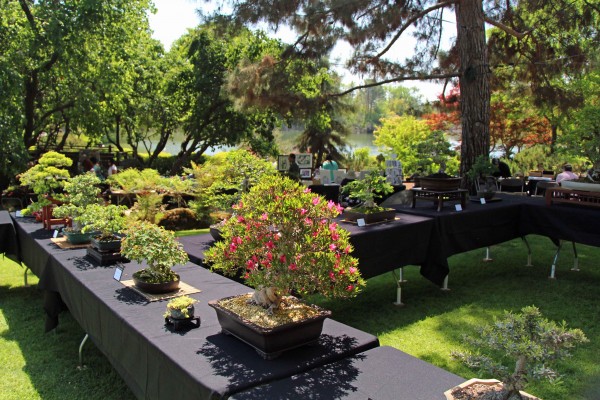





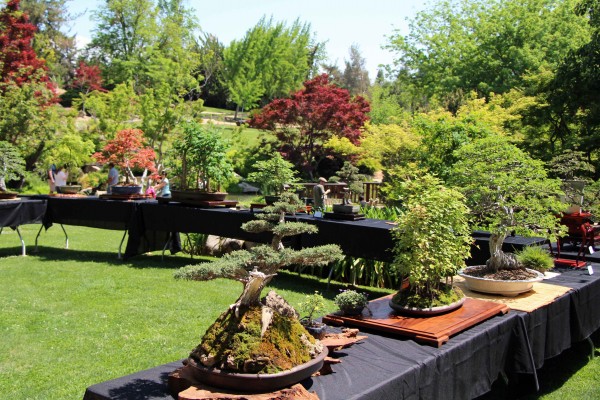




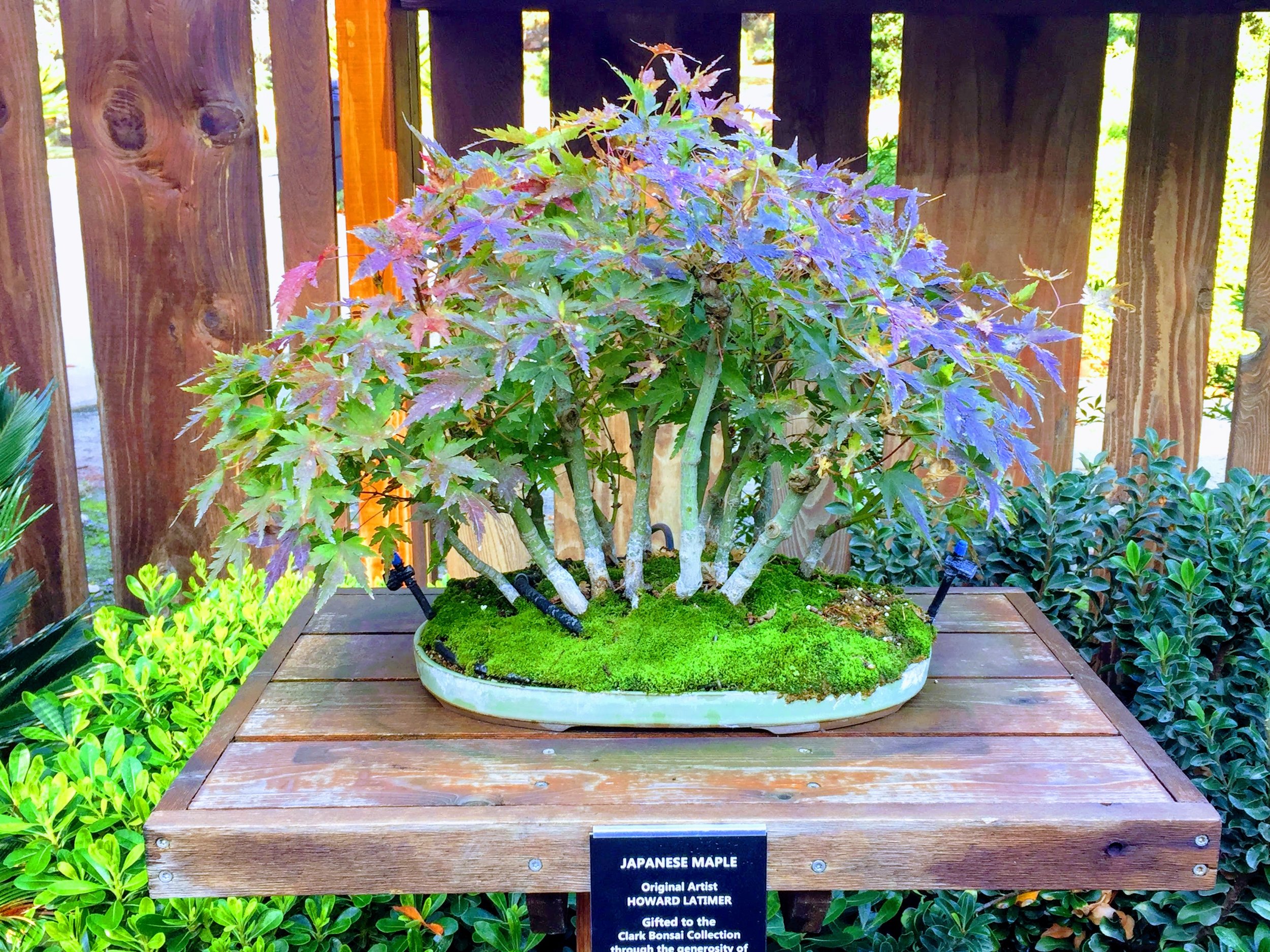





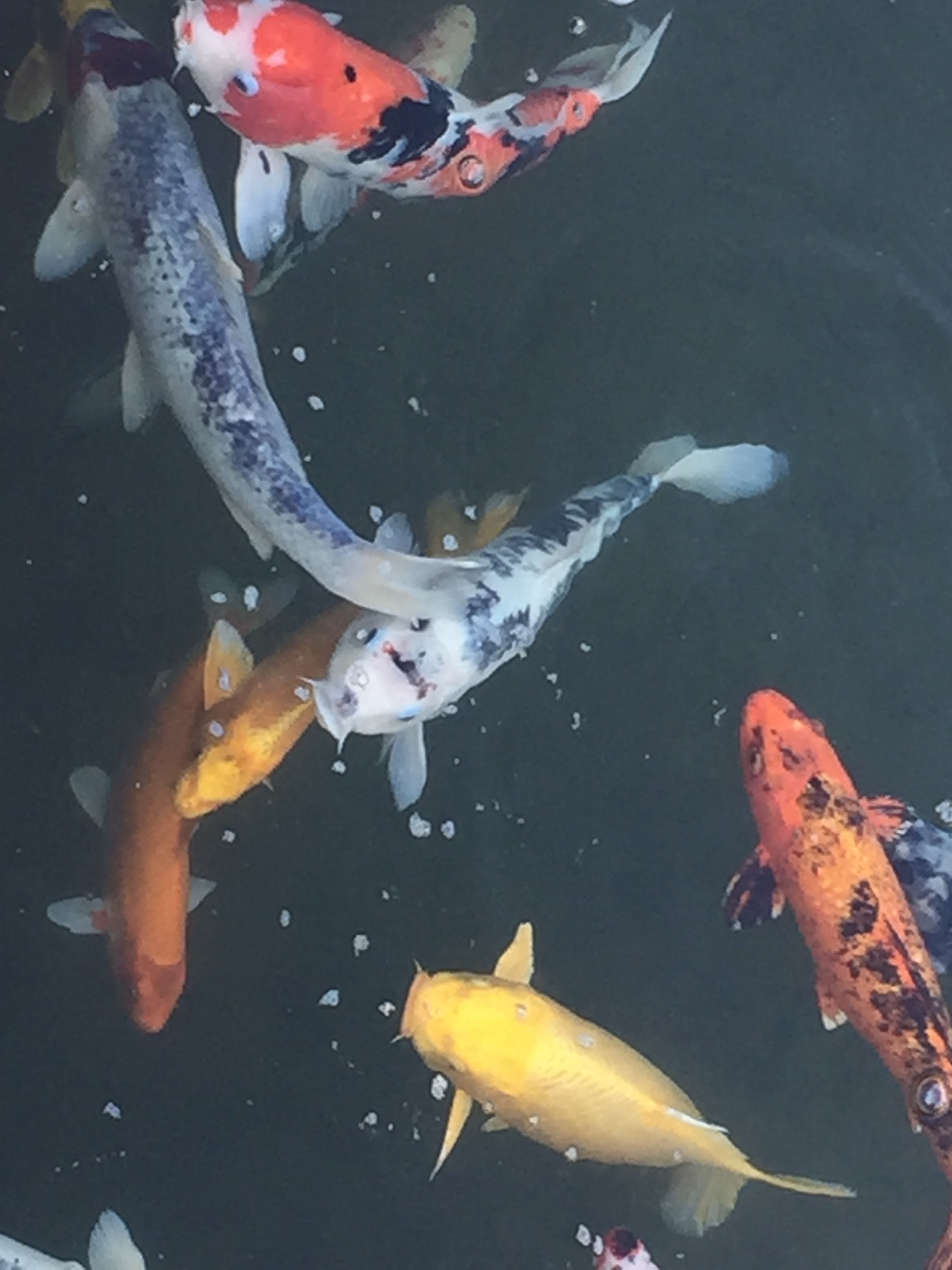









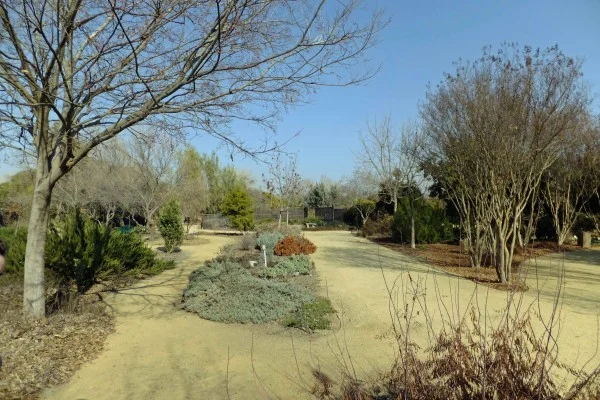


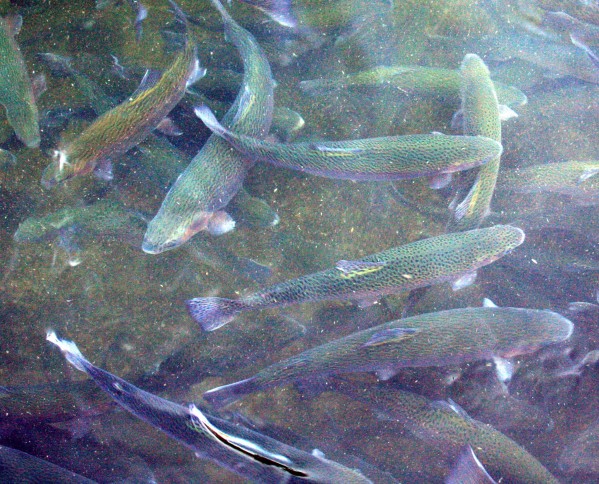



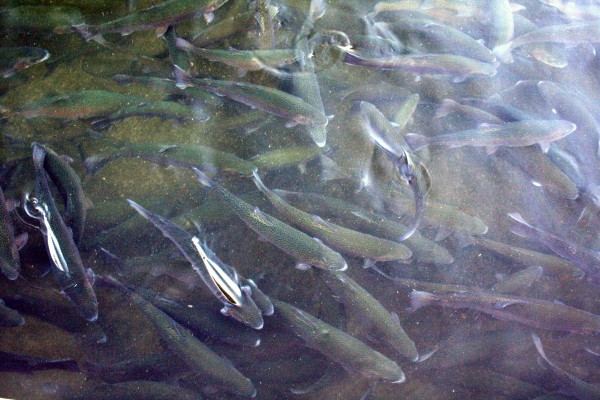

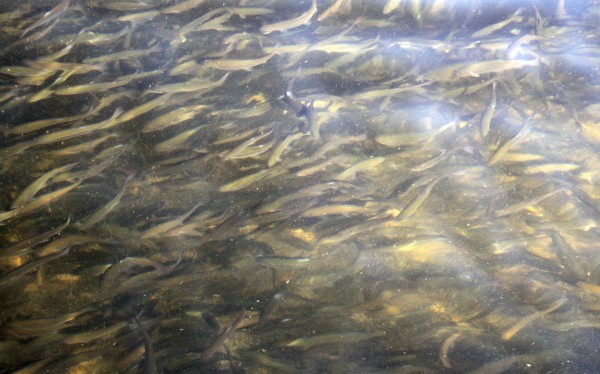











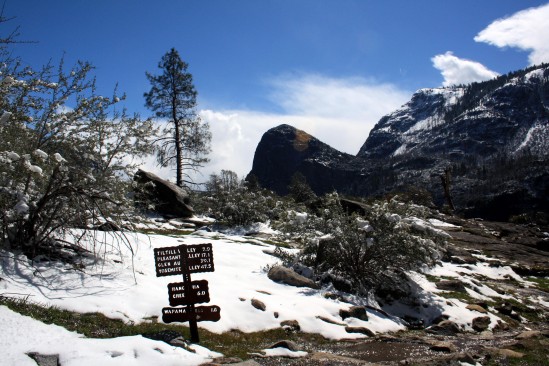


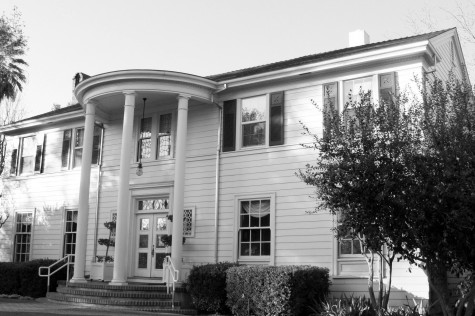

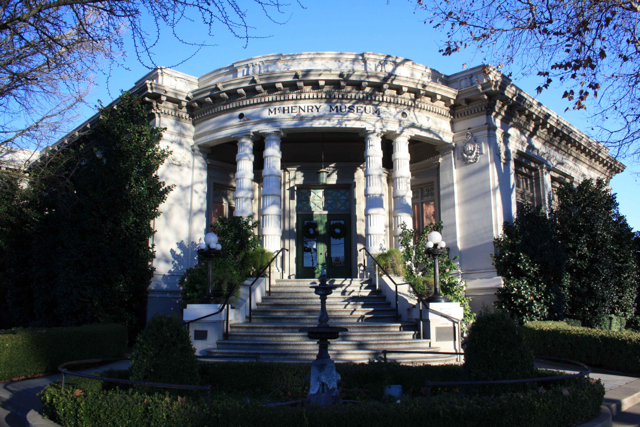
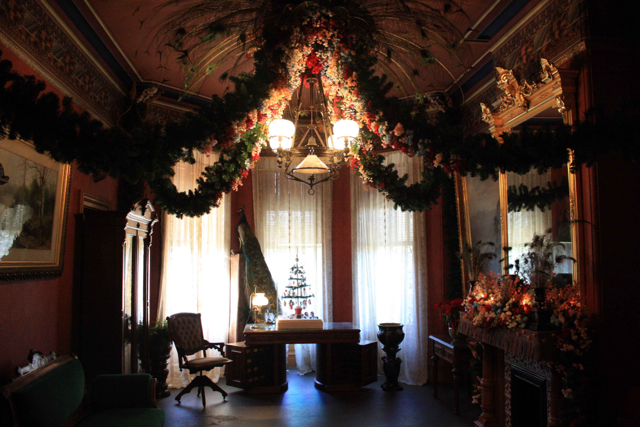



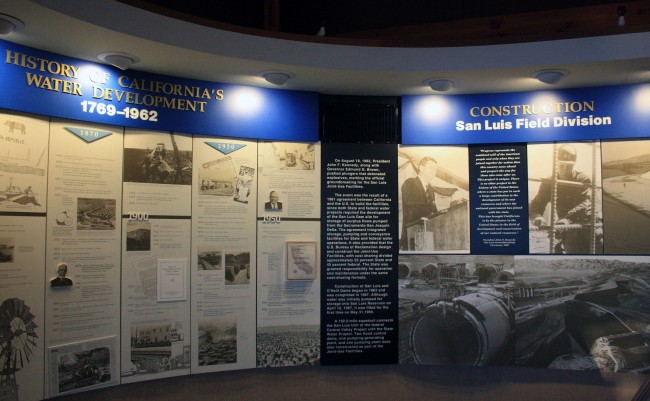































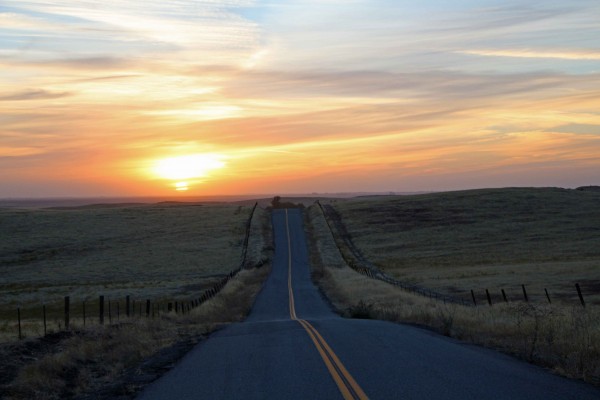


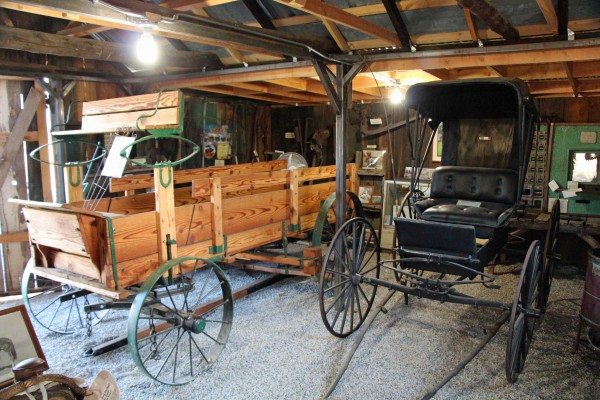




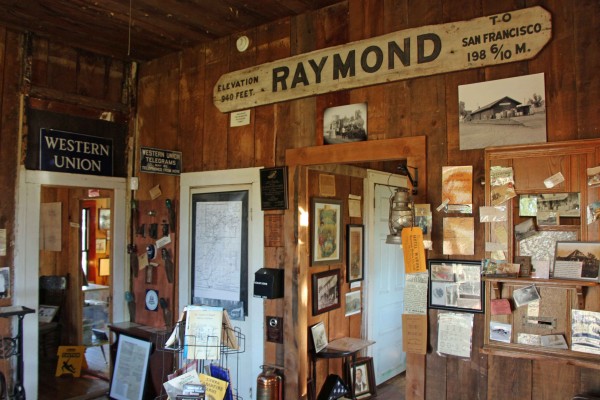






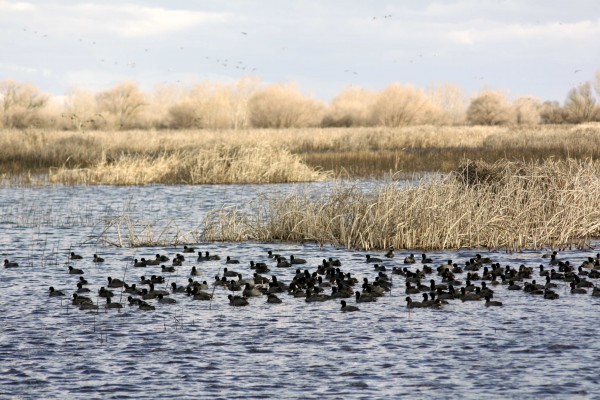


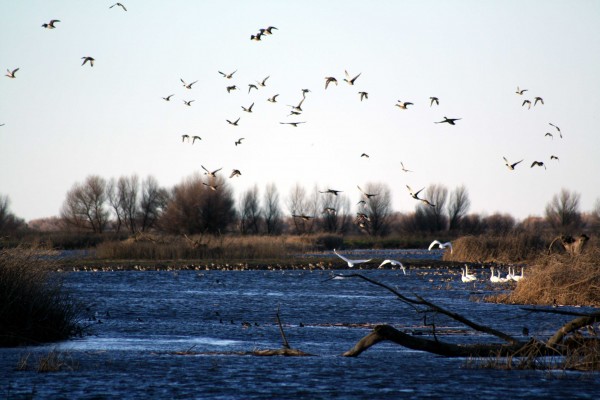




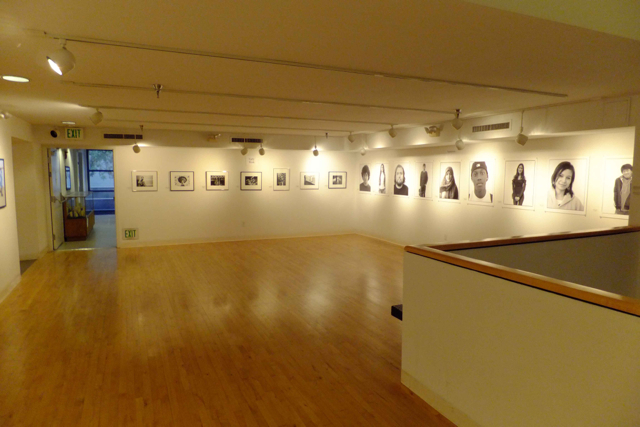












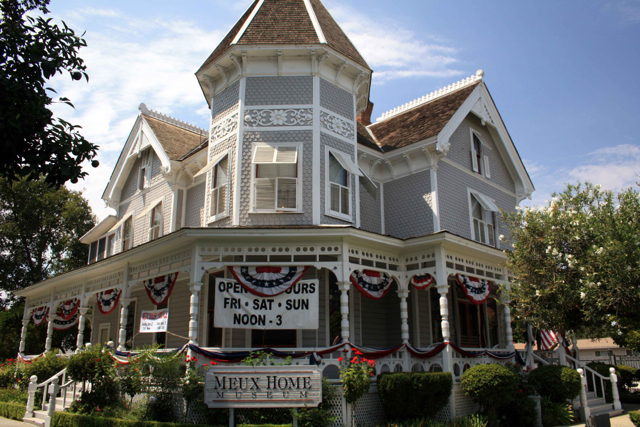









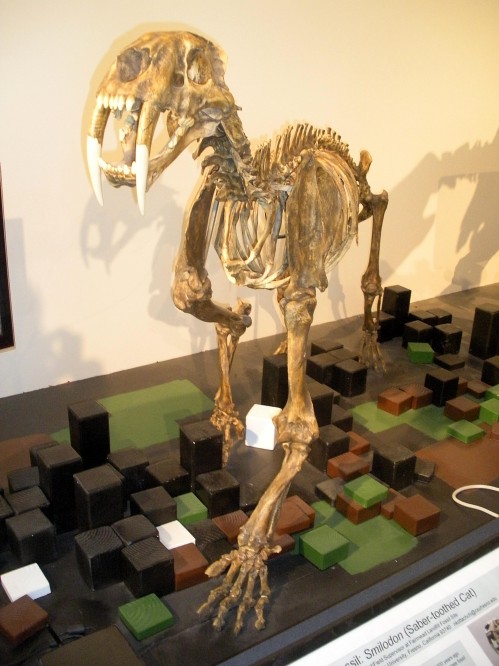

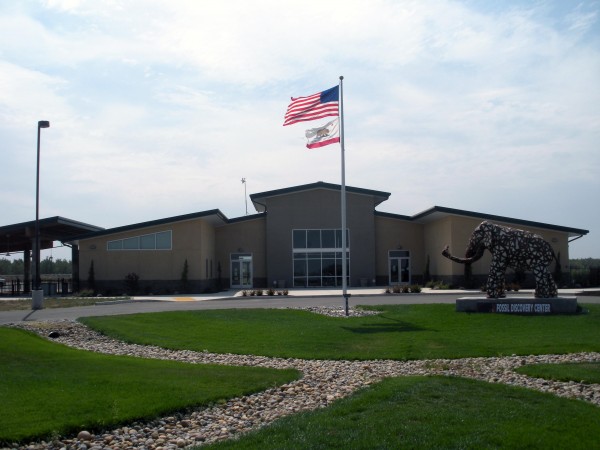

Adam Blauert, a high school teacher and avid outdoors enthusiast, has dedicated the majority of his life to Merced County. His passions include fishing, backpacking, delving into local history, and exploring the wonders of the western states.